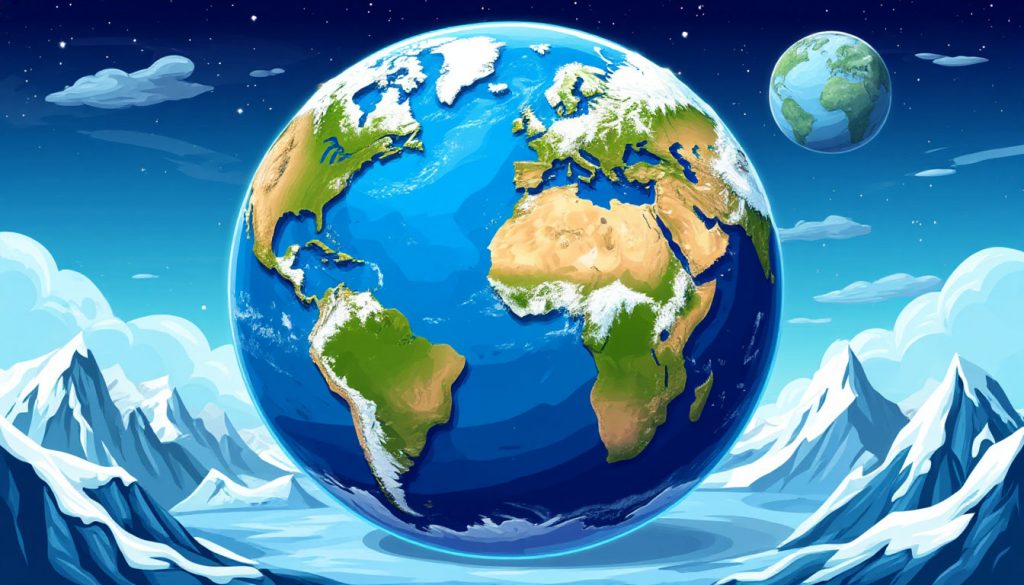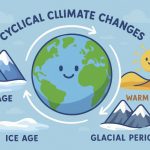An Ice Age is a long-term period in Earth’s history when global temperatures drop significantly, leading to the expansion of ice sheets and glaciers over large parts of the planet. These periods of intense cold have reshaped continents, sea levels, ecosystems, and even the course of human evolution. But what exactly causes an Ice Age, how often do they occur, and are we currently living in one?
Defining an Ice Age
In scientific terms, an Ice Age is a geological period when permanent ice sheets exist at both poles of the planet. Within an Ice Age, there are colder phases called glacial periods, during which ice coverage expands, and warmer phases known as interglacial periods, during which ice retreats.
We are currently in an interglacial phase of the Quaternary Ice Age, which began about 2.6 million years ago and continues today.
Causes of Ice Ages
Ice Ages are triggered by a combination of natural factors:
- Milankovitch cycles — long-term changes in Earth’s orbit and axial tilt that affect how much sunlight reaches the planet
- Plate tectonics — movements of continents that influence ocean currents and atmospheric circulation
- Volcanic activity — large eruptions release aerosols that block sunlight and cool the atmosphere
- Greenhouse gas levels — decreases in CO₂ and methane lead to global cooling
- Solar activity — fluctuations in the Sun’s energy output impact climate over thousands of years
These elements often interact in complex ways to push Earth into or out of an Ice Age.
The Most Recent Ice Ages
Earth has experienced at least five major Ice Ages over its 4.5-billion-year history. The most recent, the Quaternary Ice Age, began in the late Pliocene Epoch and has included multiple glacial cycles:
- The Last Glacial Maximum occurred about 20,000 years ago, when ice covered much of North America, Europe, and Asia.
- Since then, Earth has been gradually warming, and ice sheets have retreated.
This warming led to the rise of human civilizations, agriculture, and modern ecosystems.
Ice Ages and Human Evolution
Ice Ages have played a crucial role in shaping human history:
- Changing climates forced early humans to migrate and adapt
- Sea levels dropped during glacial periods, exposing land bridges (like Beringia)
- Human species like Neanderthals and Homo sapiens developed tools, fire use, and clothing to survive cold climates
Many archaeological discoveries are linked to Ice Age conditions.
Are We Still in an Ice Age?
Yes — technically, because permanent ice sheets still exist in Antarctica and Greenland, Earth is still in an Ice Age. However, we’re living in a warm interglacial period called the Holocene, which began about 11,700 years ago.
Some scientists speculate that without human-caused climate change, Earth might eventually enter another glacial period — but rising greenhouse gas levels are likely delaying or preventing that natural cycle.
Glossary
- Ice Age — A long period of reduced global temperatures and widespread glaciation
- Glacial period — A colder phase within an Ice Age when glaciers expand
- Interglacial period — A warmer phase when glaciers retreat
- Milankovitch cycles — Orbital variations that influence Earth’s climate over long timescales
- Holocene — The current interglacial period, starting around 11,700 years ago


